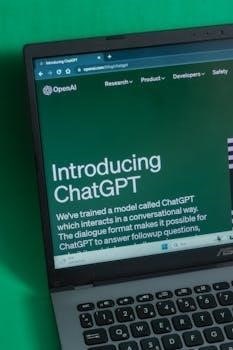
Understanding NEBOSH Scenario-Based Assessments
NEBOSH scenario-based assessments (SBAs) present candidates with realistic workplace situations. SBAs test the application of health and safety knowledge through scenario-related questions. These simulate real-world challenges, requiring examinees to demonstrate their understanding and problem-solving abilities.
What are Scenario-Based Assessments (SBAs)?
Scenario-Based Assessments (SBAs) are a core component of NEBOSH exams, designed to evaluate a candidate’s practical application of health and safety principles. These assessments present a detailed, realistic workplace scenario, followed by a series of questions that require candidates to analyze the situation, identify hazards, and propose appropriate control measures. Unlike theoretical questions, SBAs emphasize critical thinking and real-world problem-solving skills, ensuring candidates can effectively manage risks in various occupational settings.
Purpose of Scenario-Based Questions in NEBOSH Exams
The primary purpose of scenario-based questions in NEBOSH exams is to assess a candidate’s ability to apply theoretical knowledge to practical workplace situations. These questions require candidates to analyze complex scenarios, identify hazards, evaluate risks, and propose appropriate control measures. By simulating real-world challenges, scenario-based questions test critical thinking, problem-solving, and decision-making skills. This approach ensures that NEBOSH-certified professionals can effectively manage health and safety in diverse occupational environments, promoting a safer and healthier work culture.
Key Components of NEBOSH Exams
NEBOSH exams typically involve written assessments, scenario-based questions, and practical applications. These components collectively evaluate a candidate’s understanding and application of health and safety principles. The exams ensure comprehensive assessment, combining theoretical knowledge with practical skills.
Written Assessments and Scenario-Based Questions
NEBOSH exams integrate written assessments alongside scenario-based questions to evaluate a candidate’s grasp of health and safety principles. Scenario-based questions present realistic workplace situations, challenging candidates to apply their knowledge practically. Written assessments further probe theoretical understanding. Together, these components provide a comprehensive evaluation of a candidate’s competency. The emphasis on scenario-based questions reflects the importance of practical application in real-world settings and meets specific learning needs.
Practical Applications and Risk Assessments
NEBOSH exams emphasize practical applications and risk assessments, requiring candidates to demonstrate their ability to apply theoretical knowledge in real-world scenarios. Candidates must conduct risk assessments based on provided scenarios, identifying hazards and proposing control measures. Demonstrating competence in practical risk management is vital for NEBOSH certification. This practical focus ensures that candidates possess the skills necessary to contribute effectively to workplace health and safety, and meets your specific learning needs.
NEBOSH IGC Exam Structure and Question Paper
The NEBOSH IGC exam includes scenario-based questions to assess candidates’ knowledge and application of health and safety principles. These questions are designed to evaluate practical understanding and problem-solving skills in realistic workplace situations.
Open Book Examination Format
The NEBOSH IGC now uses an open book examination format, allowing candidates to access textbooks and digital resources during the assessment. Unlike closed-book exams, this format tests the ability to apply knowledge rather than rote memorization. These assessments test your application of knowledge with scenario-based questions. The open book format offers flexibility, allowing candidates to complete the exam remotely, maintaining the integrity of the assessment process.
Scenario-Based Question Paper in NEBOSH IGC
The NEBOSH IGC question paper now features scenario-based questions designed to assess practical application. The examination begins with a realistic scenario. Candidates must complete a series of tasks based on this scenario, including a risk assessment exercise. Most answers should draw on relevant information from the provided scenario. This requires a unique thought process, strong fundamentals, and the ability to apply core concepts.
Answering Scenario-Based Questions Effectively
To answer effectively, use the PEE structure⁚ Point, Evidence, Explanation. State your point clearly, provide evidence from the scenario to support it, and then explain your reasoning. This helps to demonstrate a thorough understanding.
The PEE (Point, Evidence, Explanation) Structure
The PEE structure is a recommended approach for answering NEBOSH scenario-based questions effectively. ‘P’ stands for Point, where you state your main argument or observation related to the scenario. ‘E’ represents Evidence, requiring you to provide specific examples or details extracted directly from the given scenario to support your point. Finally, ‘E’ also stands for Explanation, where you elaborate on how the evidence supports your point, demonstrating your understanding of health and safety principles.
Using Examples from the Scenario to Support Answers
When tackling NEBOSH scenario-based questions, grounding your responses in the provided context is paramount. Answers should not exist in a vacuum of theoretical knowledge, but instead, be directly linked to the details presented in the scenario. By extracting relevant information and using specific examples, you demonstrate an ability to apply your understanding of health and safety principles to a real-world situation, illustrating a deeper comprehension of the subject matter and strengthening the validity of your response.

Tips for NEBOSH Open Book Exam Success
Success in NEBOSH open book exams requires strategic preparation. Utilize available resources effectively. Time management is crucial. Understand the question paper pattern, and focus on applying core concepts to the scenario provided for optimal results.
Understanding the Question Paper Pattern
To excel in NEBOSH exams, it’s essential to grasp the question paper’s structure. These often begin with a realistic scenario. Tasks based on this scenario follow, including risk assessments. Responses should draw relevant information from the provided scenario. Some questions focus on individual learning outcomes, while others combine multiple outcomes from the same unit. Knowing this pattern helps with efficient preparation.
Managing Time and Resources Effectively
Effective time management is crucial for NEBOSH open book exams. Candidates should allocate time for each question based on its marks. Utilize available resources wisely, referring to textbooks and digital materials. Quickly identify relevant information within the scenario to support your answers. Organize your thoughts before writing to maintain clarity. Efficient planning ensures all questions are addressed thoroughly within the given timeframe, maximizing your potential score.
NEBOSH Exam Question Types and Examples
NEBOSH exam questions range from theoretical to practical scenarios. These questions test candidates’ knowledge and application of health and safety principles. Examples help understand the structure and expectations. Understanding question types is crucial for exam success.
Theoretical vs. Practical Scenario Questions
Theoretical questions assess understanding of concepts and regulations. Conversely, practical scenario questions require applying knowledge to real-world situations described in a given scenario. Practical questions often demand problem-solving and risk assessment skills. Both question types are integral to evaluating a candidate’s comprehensive grasp of health and safety principles. Success requires a blend of theoretical knowledge and practical application, demonstrating competence in diverse contexts.
Example Scenario-Based Questions and Answers
Consider a warehouse scenario involving forklift trucks. A question might ask how to improve workforce consultation. Answers should reference the scenario. For example, assess consultation effectiveness within the warehouse, using scenario details. Effective answers highlight key scenario points. They then discuss relevant paragraphs, showcasing understanding. Strong responses demonstrate practical application. Candidates should extract information and apply principles effectively, demonstrating strong analytical skills.
Resources for NEBOSH Exam Preparation
Prepare effectively by utilizing NEBOSH scenario based questions and answers PDF downloads. Access support materials like sample papers to understand the exam format. These resources aid in understanding question patterns.
NEBOSH Scenario Based Questions and Answers PDF Downloads
Enhance your NEBOSH exam preparation by downloading NEBOSH IGC scenario based Questions and Answers PDFs, updated with the latest syllabus for 2024. These PDFs provide valuable practice with realistic scenarios, helping you understand the application of health and safety principles. They also offer insights into question patterns and effective answering techniques, crucial for exam success. By using these resources, you familiarize yourself with the format and demands, ultimately boosting your confidence and performance.
Support Materials and Sample Papers
Access vital support materials and sample papers to excel in your NEBOSH exams. These resources include sample question papers and assessment guides. Also, these resources help you understand the exam format, question types, and expected standards. NEBOSH provides support materials to help learners prepare for scenario-based assessments. Utilize available resources to familiarize yourself with the structure and content, improving your readiness and chances of success.

Common Mistakes to Avoid in Scenario-Based Answers
Avoid discussing frequency instead of the specific scenario’s details. A common error is not referencing the scenario adequately. Focus on the provided context and tailor answers directly to the given situation for better results.
Focusing on Frequency Instead of the Specific Situation
Many candidates mistakenly discuss frequency or incidence rates rather than addressing the specific circumstances presented in the scenario. This approach fails to acknowledge the unique factors at play in the given situation. Answers should directly address the scenario’s particular details, demonstrating an understanding of the specific context rather than generalizing based on typical occurrences or statistical data unrelated to the scenario.
Not Referencing the Scenario Sufficiently
A common mistake is failing to adequately reference the provided scenario when answering questions. Answers must draw upon and explicitly mention details from the scenario to support claims and recommendations. Without sufficient references, responses lack context and fail to demonstrate a clear understanding of how health and safety principles apply to the specific workplace conditions outlined in the scenario. Strong answers weave in scenario details.

NEBOSH Course Options and Delivery Formats
NEBOSH courses offer various delivery formats, including classroom-based, online, and blended learning options. The choice depends on individual learning preferences and circumstances. Consider factors like course duration and any additional support provided when selecting a format.
Classroom-Based, Online, and Blended Learning
NEBOSH offers diverse learning formats to suit individual needs. Classroom-based courses provide structured, face-to-face interaction. Online courses offer flexibility and self-paced learning; Blended learning combines both, offering a mix of in-person and online instruction. Consider your learning style, schedule, and access to resources when choosing a format; Each format aims to deliver comprehensive health and safety knowledge effectively, ensuring preparedness for NEBOSH exams and real-world applications.
Choosing a Course that Meets Specific Learning Needs
Selecting the right NEBOSH course involves assessing your specific learning objectives and career goals. Consider the course level, such as the General Certificate or International Diploma, based on your experience. Evaluate the course content to ensure it aligns with your industry and interests. Look for courses that offer practical application and scenario-based learning. Finally, check reviews and accreditation to ensure the course meets quality standards and provides adequate support for exam preparation and success.
The Importance of Fundamentals in Scenario-Based Questions
Scenario-based questions require a solid grasp of core health and safety concepts. Applying these fundamentals to real-world scenarios is crucial. Demonstrating a unique thought process is vital, showing examiners your comprehensive understanding and analytical skills.
Applying Core Concepts to Real-World Situations
NEBOSH scenario-based questions demand the application of fundamental health and safety principles to practical situations. Candidates must demonstrate their ability to analyze scenarios, identify hazards, and propose effective control measures, rooted in their core understanding. This involves connecting theoretical knowledge with the realities of the workplace, showcasing competence in hazard recognition, risk assessment, and implementing safety protocols as prescribed in the NEBOSH syllabus.
Demonstrating a Unique Thought Process
NEBOSH exams value more than rote memorization; they seek evidence of original analysis. Successful candidates should showcase an individual thought process when tackling scenario-based questions. This entails going beyond textbook answers and applying learned principles in innovative ways relevant to the given scenario. Demonstrating independent thinking shows a comprehensive grasp of health and safety concepts, reflecting the ability to adapt knowledge to unfamiliar situations, which sets apart exceptional performers.
NEBOSH Pass Rates and Resitting Failed Units
Candidates can resit failed NEBOSH units within five years of their first successful unit. Understanding the resit policy is crucial for planning. This allows students to improve their performance and achieve certification.
Understanding the Resit Policy
NEBOSH allows candidates to resit failed units to achieve their qualification. Candidates must complete the resit within a specified timeframe, typically five years from the first successful unit. Understanding the resit policy involves knowing the deadlines, fees, and procedures for re-examination. Proper planning ensures candidates have adequate time to prepare and improve their performance. Familiarizing yourself with the resit policy is vital for successful certification.
Strategies for Improving Performance on Resits
To improve performance on NEBOSH resits, candidates should analyze their previous exam papers. Identify weak areas and focus on those topics. Utilize support materials, sample papers, and guidance documents. Practice answering scenario-based questions using the PEE (Point, Evidence, Explanation) structure. Seek feedback from tutors or peers to refine understanding. Manage time effectively during preparation and exam. Stay updated with the latest syllabus changes. Consistent effort is key to success.

Staying Updated with NEBOSH Syllabus Changes
Staying updated with NEBOSH syllabus changes is crucial. Access the latest syllabus information on the NEBOSH website. Ensure preparedness for current exam formats by reviewing updated guidance and support materials provided by NEBOSH.
Accessing the Latest Syllabus Information
To stay updated, regularly visit the official NEBOSH website for syllabus updates. Look for dedicated sections or announcements regarding changes. Download and review the latest syllabus documents to understand new topics. Pay attention to updates regarding assessment criteria and learning outcomes. Utilize NEBOSH support materials and guidance documents. Check for version numbers and publication dates to ensure you have the most current information. Subscribing to NEBOSH newsletters can provide notifications.
Ensuring Preparedness for Current Exam Formats
To ensure preparedness, familiarize yourself with the latest NEBOSH exam formats. Review sample papers and support materials to understand question patterns. Practice answering scenario-based questions under timed conditions. Focus on applying core concepts to real-world situations presented in the scenarios. Understand the specific assessment criteria for each exam unit. Utilize resources like the PEE (Point, Evidence, Explanation) structure to effectively answer questions. Stay updated with NEBOSH guidelines and updates.














